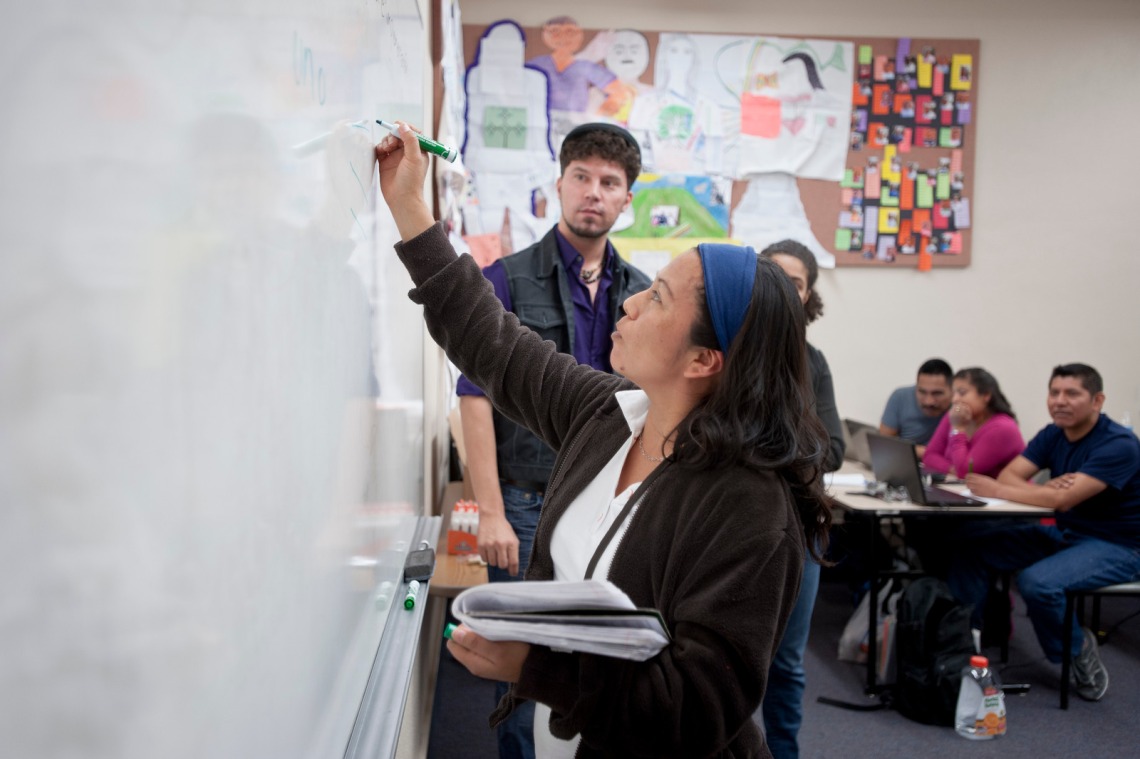New Support for Student Retention in Study of Science
A STEM-focused program at the UA has received $300,000 in private foundation funding to aid the recruitment and success of transfer students.

More transfer students from underrepresented backgrounds will be recruited and trained in science at the University of Arizona over the next three years with $300,000 in newly awarded private foundation funding.
The Sherman Fairchild Foundation is funding the UA's Arizona Science, Engineering and Mathematics Scholars, or ASEMS, program to recruit 69 transfer students to study in the College of Science per funding year. The foundation also is supporting the program's efforts to improve the graduation rate among science students.
To achieve these and other goals, the ASEMS team has hired full-time staff members and will employ a graduate student to launch a specialized track of the 5-year-old program, which has a successful record of recruiting and graduating underrepresented students.
The program, which is being launched in partnership with the UA's Transfer Enrollment Services, initially will support 40 students annually, with plans to expand.
"This program will help set students up for success," said Kimberly Sierra-Cajas, director of the College of Science's Office of Undergraduate Research. "This is the program a student can utilize if they want to do whatever it takes to be successful in science."
The structured, individualized, immersive program is open to all students in Arizona attending community colleges, including tribal colleges.
The foundation funding is a boost for the UA in its continued mission to improve STEM training.
With earlier funding from the Leona M. and Harry B. Helmsley Charitable Trust under a nationwide Association of American Universities initiative, the UA has been at the center of STEM teaching and learning reform.
Also, the campuswide "Never Settle" strategic plan calls for an acceleration of initiatives and programs designed to improve STEM education and enhance partnerships with community colleges.
While responding to Never Settle objectives, the ASEMS initiative also supports UA and statewide Arizona Board of Regents goals to improve transfer student recruitment, retention and success. In particular, the regents established 2020 benchmarks for increasing the numbers of community college transfer students who eventually earn a bachelor's degree.
The ASEMS team has taken an evidence-based approach regarding retention methods targeting first-generation students and underrepresented students in STEM, Sierra-Cajas said.
The team points to retention-related research indicating that it is important to involve students' families in the college process and that transfer students often need support interacting with faculty, getting involved in research and developing a sense of belonging on campus.
"We are recognizing that transfer students and traditional students are two different groups of people with different needs," said Elliott Cheu, associate dean of the UA College of Science.
"As a college, we have had academic recovery programs, but this is the first time we have made the distinction programmatically to meet the needs of transfer students," Cheu said. "This is a way to level the playing field."
In addition to the success courses, students in the program will meet regularly with peer mentors to discuss course topics, grades and challenges. They also will meet with students in the traditional ASEMS program and engage with faculty.
"Another benefit of the program is that the staff and faculty involved are very connected to STEM resources around campus," Sierra-Cajas said.
Through the transfer track, ASEMS students will participate in the program's research readiness course and be exposed to research through a semester-long lab shadowing experience. With the foundation funding, the ASEMS team will be able to fund peer advisers and provide students with research stipends.
Such opportunities will help the ASEMS transfer students become more competitive for premier undergraduate research programs at the UA. Those programs include the Undergraduate Biology Research Program, Maximizing Access to Research Careers and the UA/NASA Space Grant.
Also, the ASEMS and the Transfer Enrollment Services teams are collaborating directly with Pima Community College.
Faihza Hill, recently hired to serve as the program's transfer student recruiter and retention specialist, is directly recruiting Pima Community College students, co-hosting regular meetings with college staff and will be holding training sessions with the college's advisers on ways to better prepare students for their transition. Edgardo Hernandez also was recently hired as the Office of Undergraduate Research program coordinator, organizing community-building and lab shadowing activities.
"Transfer students are accustomed to having a centralized, one-stop shop for everything," Hill said.
"We are creating a community where they know other transfer students — students who, in some capacity, are interested in the same career goals. This is very important, because these students don't always get connected. We want to make sure we are tailoring the program appropriately for those students, and we want them to feel they have a special place here."

